This is a continuation of the preceding blog comparing the new CSC RX4 to the RX3 motorcycle. I probably should have waited until I had taken all of the photos and organized the comparison into discrete areas (like wheels, tires, brakes, and so on), but you’re going to have to deal with the ramblings of a disorganized mind (and that would be mine). With apologies in advance, my ramblings will ramble on in no particular order.
With that as a preface, let’s take a look at the fuel tanks. First up is the RX4 tank, and the big news is that it holds 5.3 gallons instead of the RX3’s 4.2 gallons. Here’s the RX4 tank…
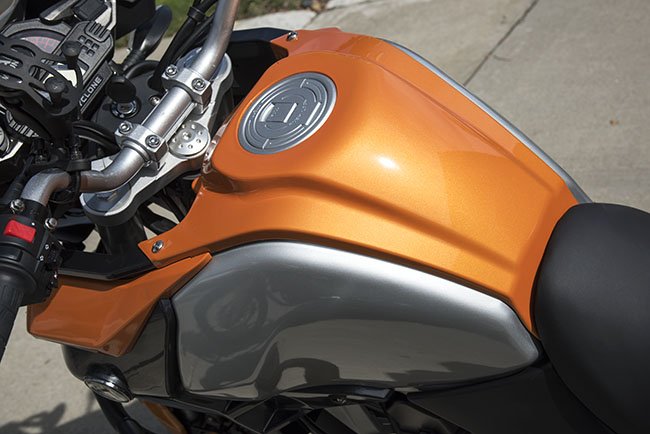
You can’t help but notice the paint on this motorcycle. CSC received three bikes for the U.S. certification effort…one in silver, one in red, and one in orange. My bike has the metalflake orange color and it’s visually arresting (it will stop you in your tracks when you see it). Here’s a close up…
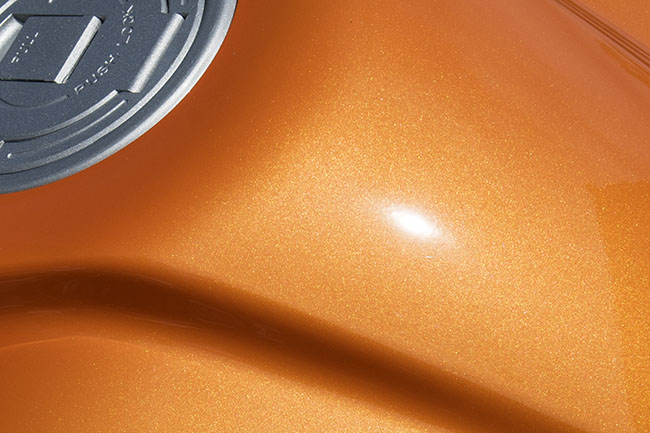
There are really three or four colors going on here. One is the metalflake orange. Another is the metallic silver on the tank’s side panels. A third is the even darker metallic gray on yet another side panel (you’ll see that in another photo below). And the fourth is the black of the frame and the molded plastic body bits. It all comes together nicely.
You can compare that to the orange on my 2015 RX3…

I mentioned the RX4’s 5.3 gallon capacity. Okay, let me explain a bit more. I haven’t attempted to actually run the thing dry and put 5.3 gallons of gasolina in the tank. 5.3 gallons is the figure Zongshen provided. The RX3’s spec is 4.2 gallons, but that’s not the right number. The RX3’s tank would hold 4.2 gallons if there was nothing else in it, but the tank is also occupied by the float for the sending unit and the fuel pump, and they both take up space. Gerry and I once took a bone dry RX3 tank with the fuel pump and sending unit in it to a gas station, and after really finessing the gas station pump, we were able to coax 3.9 gallons into the RX3 tank. I don’t know if the same situation applies to the RX4 tank. Maybe that 5.3 gallon statistic is really 5.o gallons.
The other thing going on in the RX3 is that the fuel gage and the fuel warning light indicate you are out of fuel when there’s still something close to a gallon left in the tank. As it was explained to me by the guys in Chongqing, that’s to make sure the fuel pump is always surrounded by fuel (it’s how the fuel pump is cooled). I don’t know if the same situation applies to the RX4 fuel tank. I have to get more miles on the bike to let you know.
So, let me do what I have a bad habit of doing, and that’s go tangential for a bit to tell you a little bit more about the RX3 tank, and in particular, the tank on my RX3. You’ll notice that my tank has a panel with a decal that says “Speed” on it. That was the first year of the RX3, and I guess it was Zongshen’s idea of making the motorcycle convey a fast image. The Internet weenies had a lot of fun with that. When they cornered me on it, I told them that CSC originally asked that the bike’s name be “Methamphetamine,” but we would have had to make the font so small you couldn’t read it. That got a laugh and the Speed teasing ended. Mercifully, CSC changed the name to “Adventure” the following year. There’s no such name label or decal on the RX4. I think that’s a good thing.
You probably notice all of the other decals on my RX3’s fuel tank. I like to think of them as campaign ribbons. We put one on their for each of the Baja runs, the 5000-mile Western America Adventure Run, and the Destinations Deal tour. I like them.
Moving right along, here’s a side view of the RX4 showing the engine and fuel tank, and then a similar photo of the RX3…
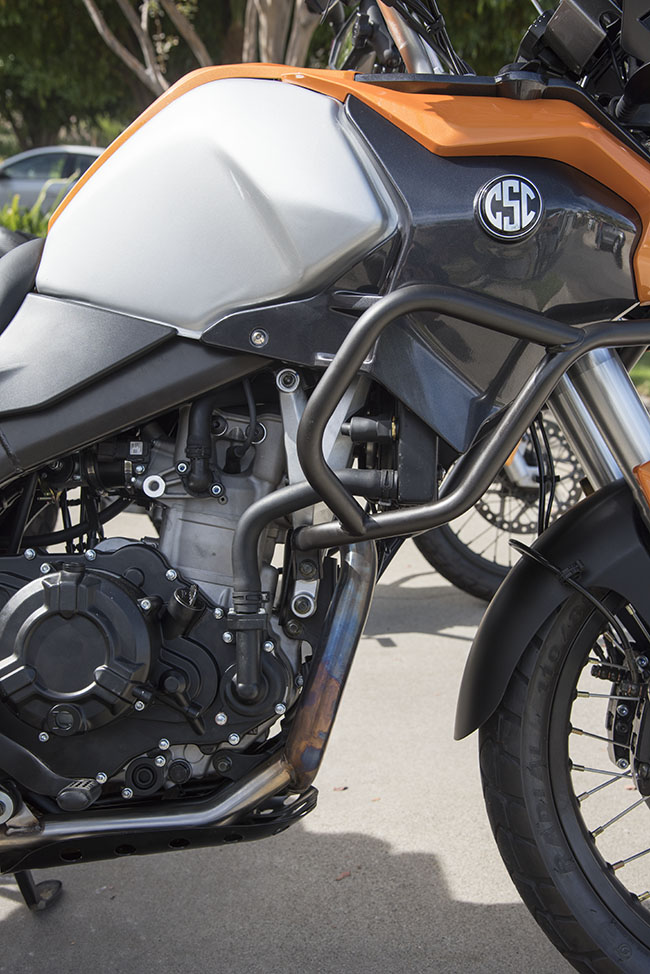
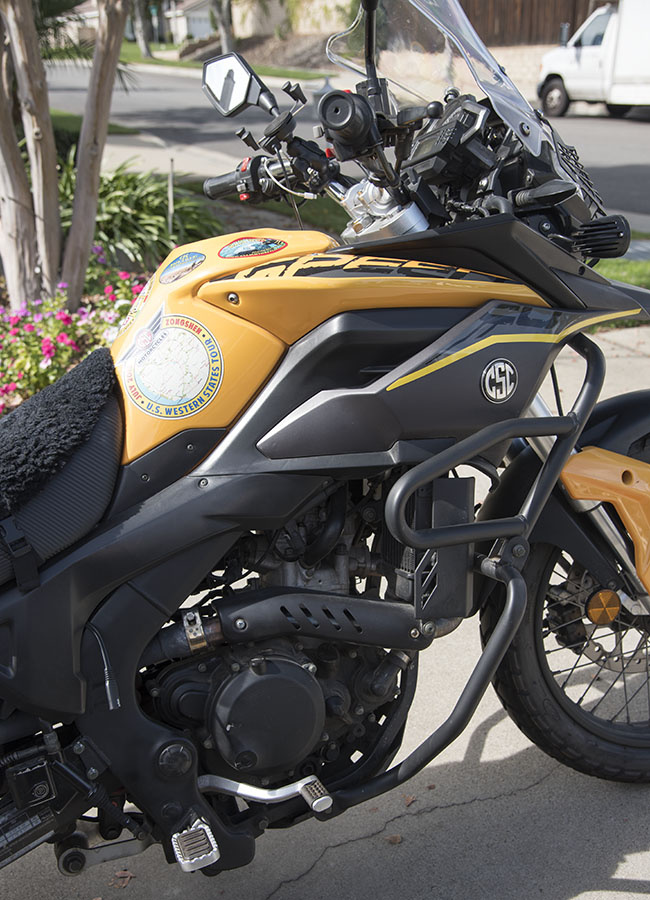
There’s a lot to take in on those two right side views. Here we go, folks.
I guess the first thing to notice are the engine guards. In the old days, we used to call them crash guards, but these days it’s more correct to say engine guards. Whatever. Anyway, on the RX3, the engine guards extend all the way to the bottom of the engine. On the RX4, they only cover the upper portion of the bike. I don’t know why that is. It might be that if you drop the RX4 on its side, the upper portion is enough. But I don’t know this, and I’m not going to drop both bikes on their sides to find out.
On the RX4, the crank position windows are on the right side of the engine. You can see them just behind the spark plug on the cylinder on the right side. On the RX3, those viewing ports are on the left side of the engine.
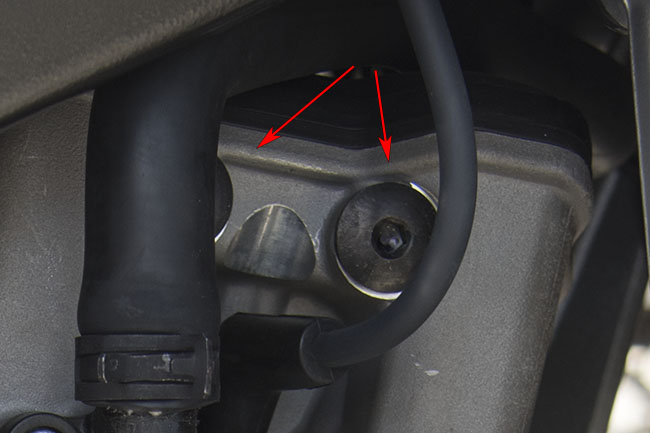
The RX3 has an upswept exhaust pipe; on the RX4, the exhaust pipe heads south to run underneath the engine, and then heads north again to an upswept exhaust pipe (you can’t see that in the above photo). While some might view the RX4 exhaust routing as less than desirable from an offroad perspective, I’m okay with it. The RX4 has a steel engine skid plate, and the RX4’s exhaust routing makes getting to the oil fill port a lot easier (it’s just aft of the water pump).
You’ll notice that the cylinder, cylinder head, and upper engine mount castings are all much heftier than are those on the RX3. If you look at the cylinder head casting just aft of the cylinder head, you’ll see a weird-looking ribbed triangular extension with a threaded hole in it. It’s on both sides of the engine.
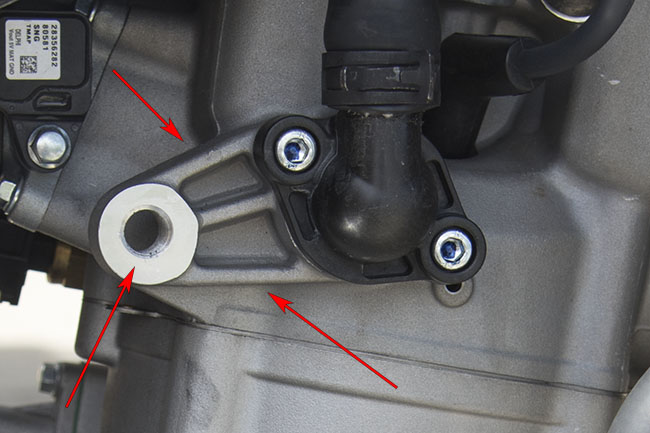
With that threaded hole, it looks like Zongshen left a part off the bike (there’s nothing there). My guess is that this feature is either used to support the engine when it is moving down the assembly line, or that it is there for mounting the engine in another frame (perhaps one of the Dakar rally bikes). I’d like to see Zongshen remove that part of the casting on the RX4 engine; it serves no purpose on the RX4 other than to add weight to a bike that doesn’t need to take on ballast.
The RX4 appears to have the same arrangement for the oil filter and the oil strainers as does the RX3. One strainer is accessible via a threaded cover on both sides of the crankcase; the oil filter is located beneath a cover on the right side of the engine.
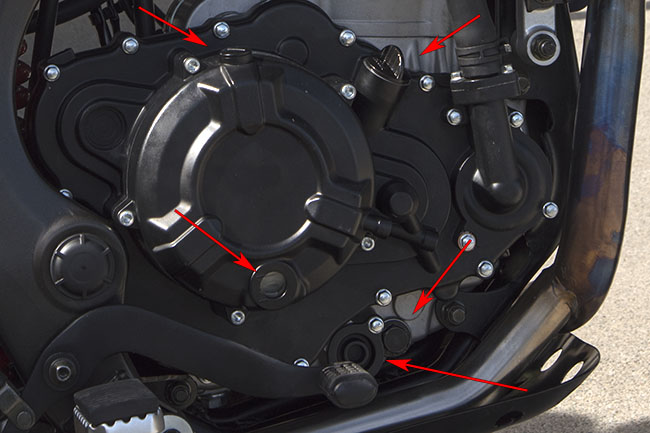
That’s enough for today, my friends. We’ll have another RX3 and RX4 micro-comparison posted tomorrow. I’m going to take a break and get out and ride the RX4 for awhile…

Cool Joe let us know power diff And top speed
Nice to see better access to the oil fill. Those threaded holes might become a good spot to hang my mandatory state inspection sticker.
Please let us know if the suspension is better the rear shock on the RX 3 was awful on my 2015 ,an forks where barely ok tolls fork oil change with quality/ thicker fork out.
Suspension feels fine, Ron. I have not taken it off road yet.
Darn – Thought I saw it mentioned previously the RX4 would step to a spin-on oil filter. Ah well. Still excited to see more, and might want to be part of a pre-order deal if offered.
Any idea yet of the expected mpg?
Dan K.
Dan:
Zongshen reports it as 65 mpg (actually, they report is at liters per 100 km, and that converts to 65.3 mpg). I haven’t tested it yet, but I will when I get on the bike again and do a longer run. I wanted to get a few more miles on the bike. As you know, fuel economy generally improves once the engine is “tenured.”
Joe no more info top speed no no speedo but gps speed top RPM’s claims 8,000 but a review guy said only went up to 6 only .
I don’t know who the review guy you’re referring to was, Orlando, but I can assure the engine revs easily past 6000 rpm.